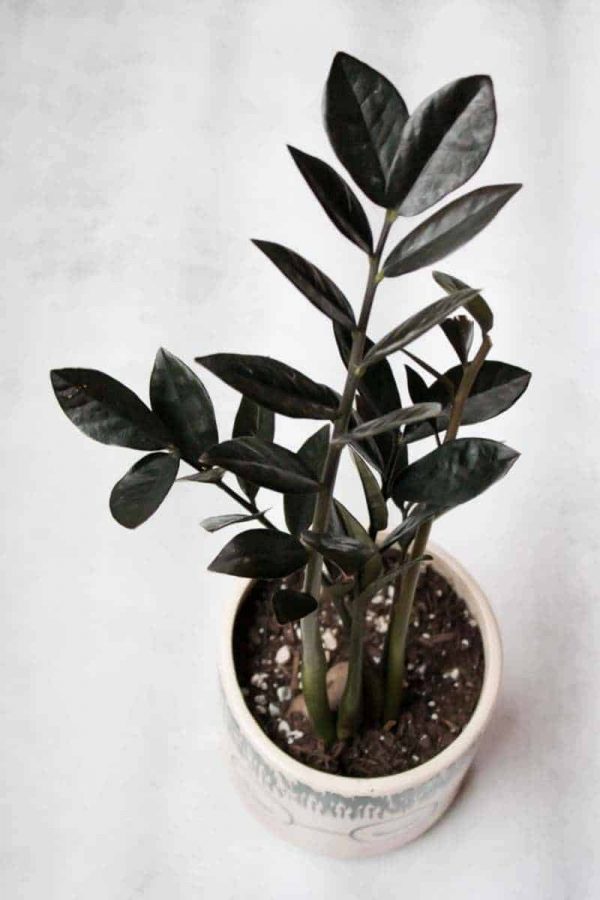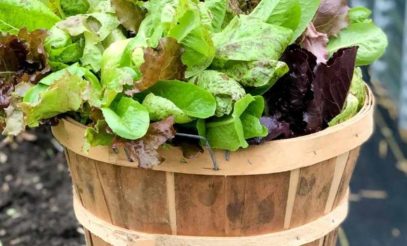Ask houseplant lovers for their recommendations for easy beginner plants, and you’ll almost always hear a ZZ plant, or zanzibar gem, on the list. No houseplant is lower maintenance than a ZZ!
While you can certainly opt for the classic Zamioculcas Zamiifolia with its green foliage, you might want to opt for something a little different and look for the cultivar ZZ ‘Raven.’ Dark foliage grows in waxy leaflets along the stems.
We love this for its graceful lines, arching height, easy-care, and so-dark-purple-it-is-almost-black color. Let’s talk about raven ZZ plant care!
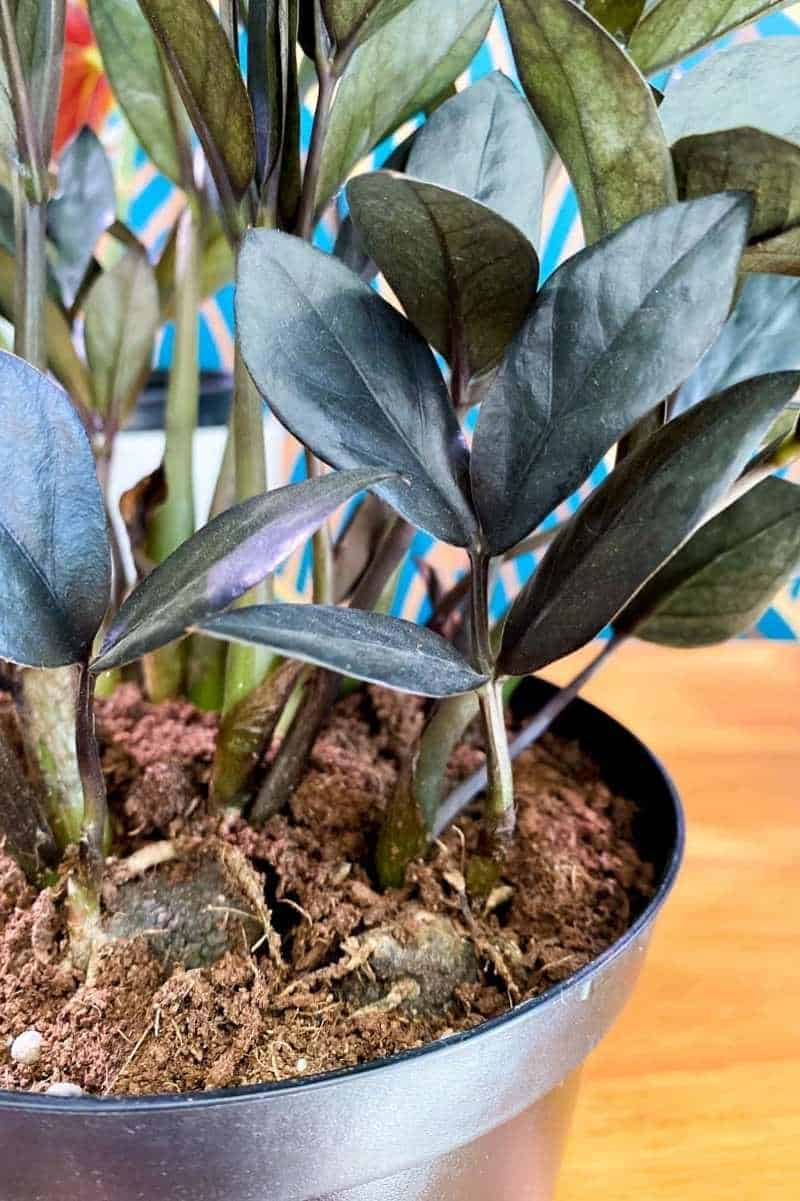
Table of Contents
Raven ZZ plant care
Light Requirements
A Zamioculcas Zamiifolia ‘Raven’ can handle low light conditions, making it a popular choice for offices, bathrooms, and other rooms with less natural sunlight. Note, however, that while the plant can survive in lower light, it won’t necessarily thrive and put out new growth there. Like many houseplants, the ideal lighting for a Raven ZZ is bright indirect light. Avoid direct sunlight so that the leaves don’t burn.
If a Raven ZZ is living in a darker spot, make sure it is in a well-draining pot and soil, and be careful not to overwater.
Growfully Protip
Overwatering has less to do with the amount of water you pour over the soil and more to do with how often you water. Water when the potting mix is almost completely dry, and water until you see water coming out of the pot’s drainage holes.
Water Needs
ZZ plants are native to eastern Africa, where they often experience long periods of drought. In response, they have developed rhizomes and thick upright stems that can retain water for the plant. Because of this, a Raven ZZ doesn’t need to be watered as often as many other indoor plants.
Water when the soil is almost completely dry. Before watering, aerate the soil with a wooden chopstick or small soil rake (carefully! You don’t want to stab the rhizomes). Then saturate thoroughly, until water drains out of the drainage holes. Discard any water that gathers in the saucer—Raven ZZs are susceptible to root rot and don’t like having wet “feet.”
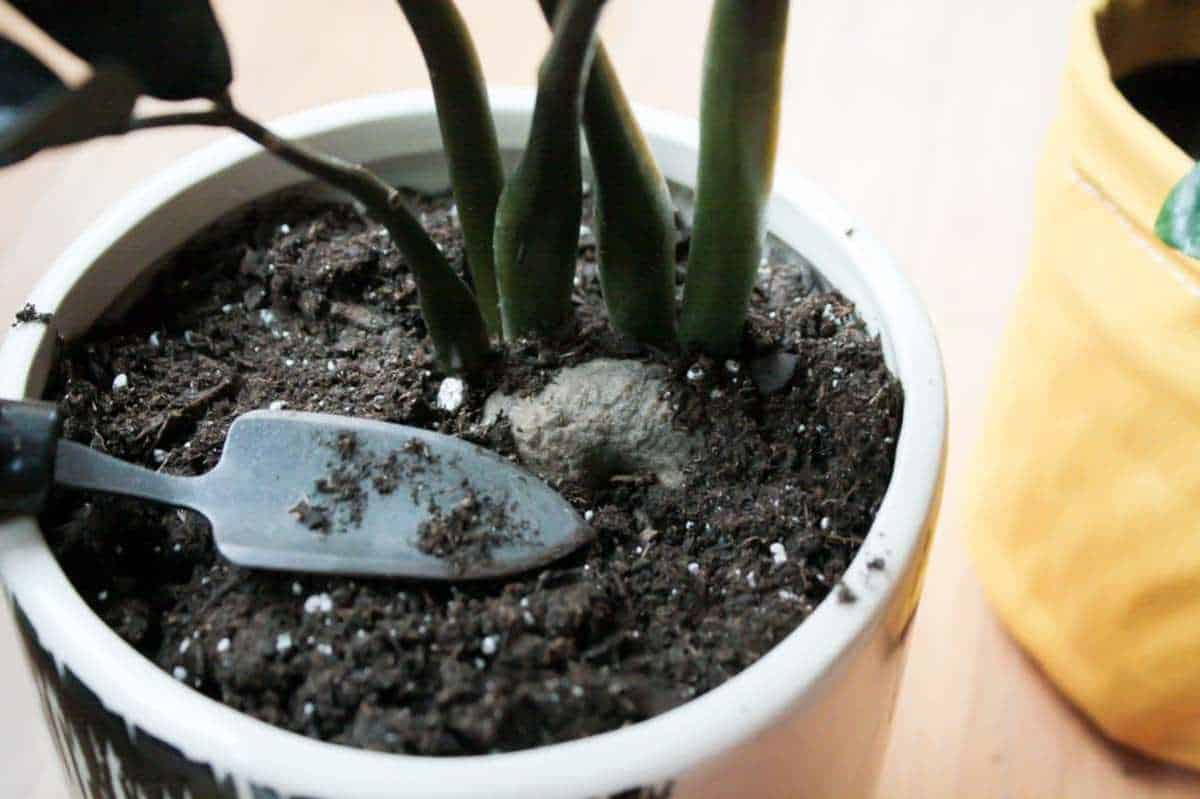
Soil
Select a well-draining soil to avoid root rot. A good potting soil will work, but if you have a tendency towards overwatering, add some perlite or pumice to a soil mix for better drainage, or create your own soilless potting mix.
Humidity Requirements
Zamioculcas Zamiifolias don’t have special humidity needs. They will do just fine in the relatively low humidity found in many indoor spaces without needing a humidifier.
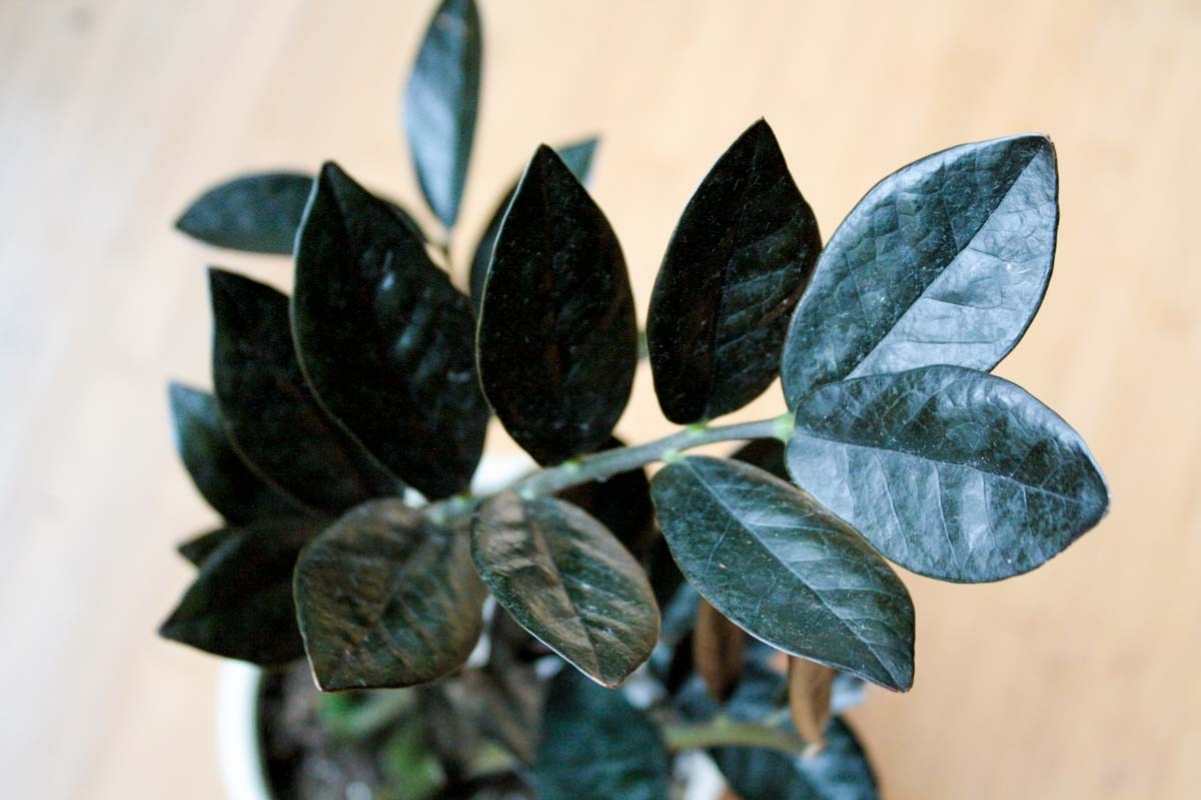
Fertilizer
Use a balanced liquid fertilizer to feed your Raven ZZ plant a few times a year.
Wipe down the leaves
Help your ZZ Raven plant do its photosynthesis thing by giving the leaves a wipe down when they start to look dusty. Avoid commercial leaf shine products and instead, use a soft cloth dampened with lukewarm water. Or, finish two tasks at once by using a pest prevention spray (this Leaf Wellness Spray, which contains neem oil, is our favorite) to dust your leaves and fend off pests at the same time.
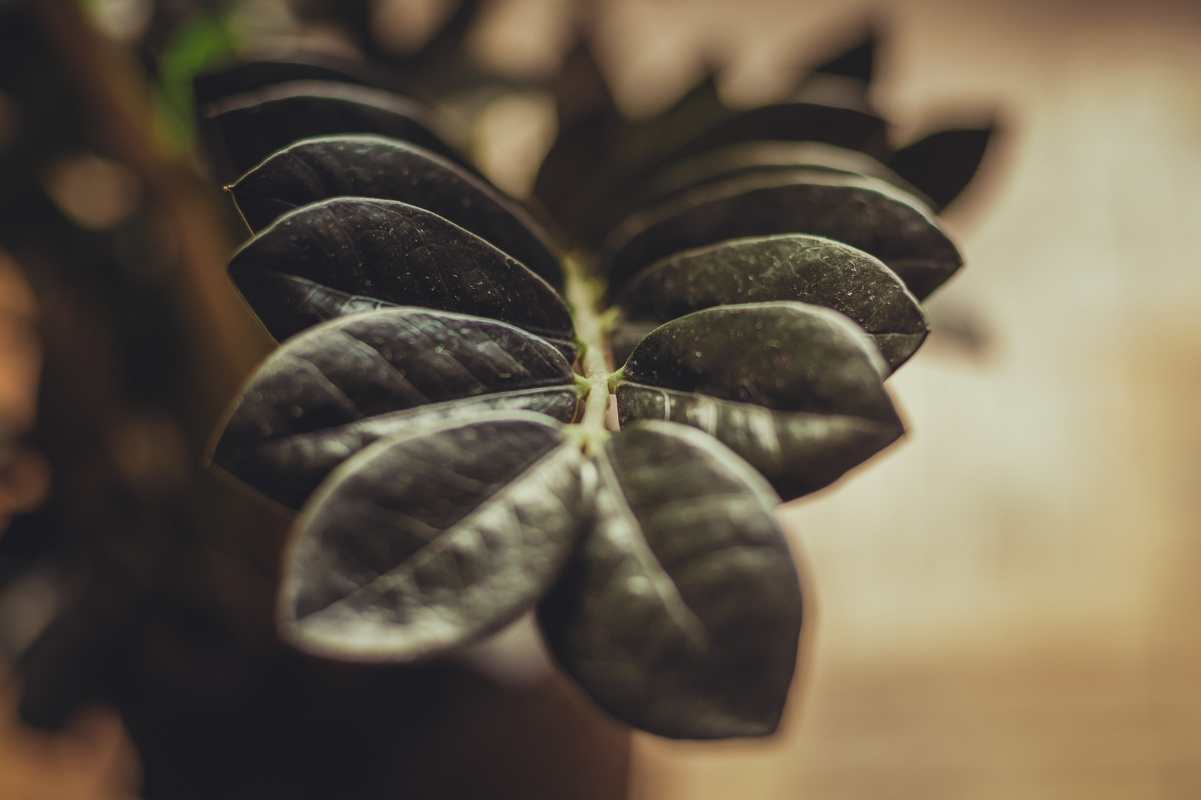
Why is my ZZ Raven plant leaning to the side?
Plants grow towards their light source, and this can be especially noticeable in plants grown in low amounts of light. To keep your plant growing upright, give the pot a quarter turn every few months.
Raven ZZ plant care: How often should I water?
It depends on how much light and warmth your plant is getting! Water when the soil is almost completely dry, as the plant will store a lot of water in its stems and rhizomes. In a sunny spot in the summer, this could mean watering every 2-4 weeks. But in a darker spot in winter, you may go 1-2 months without watering. Keep an eye on the soil, and aerate and water when it is almost all the way dry.
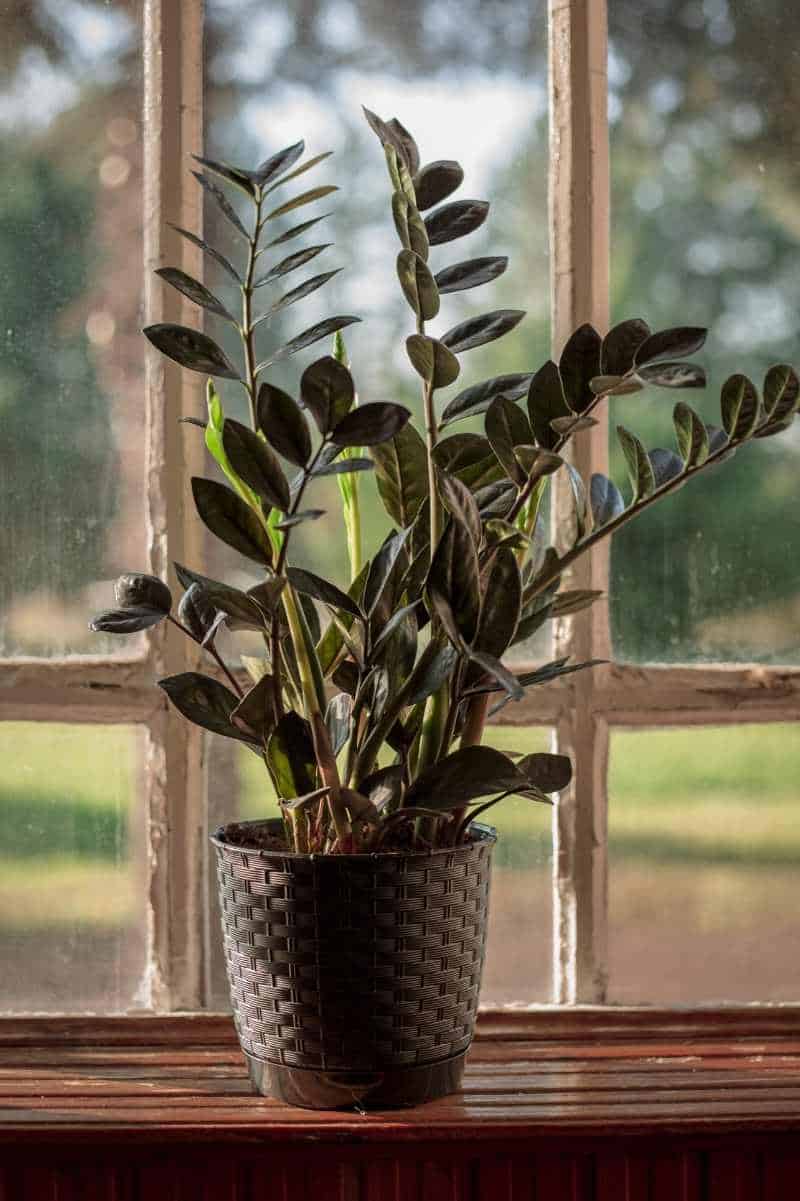
Why aren’t the leaves black?
Non-black leaves are baby leaves! ZZ Raven leaves are the bright green color of an original ZZ when they first unfurl. Over time, those green leaves will turn into black foliage.
Are Raven ZZ plants safe for pets?
Sorry, but no. Keep this plant out of reach of small children and pets, as all parts of the plant can be toxic if ingested.
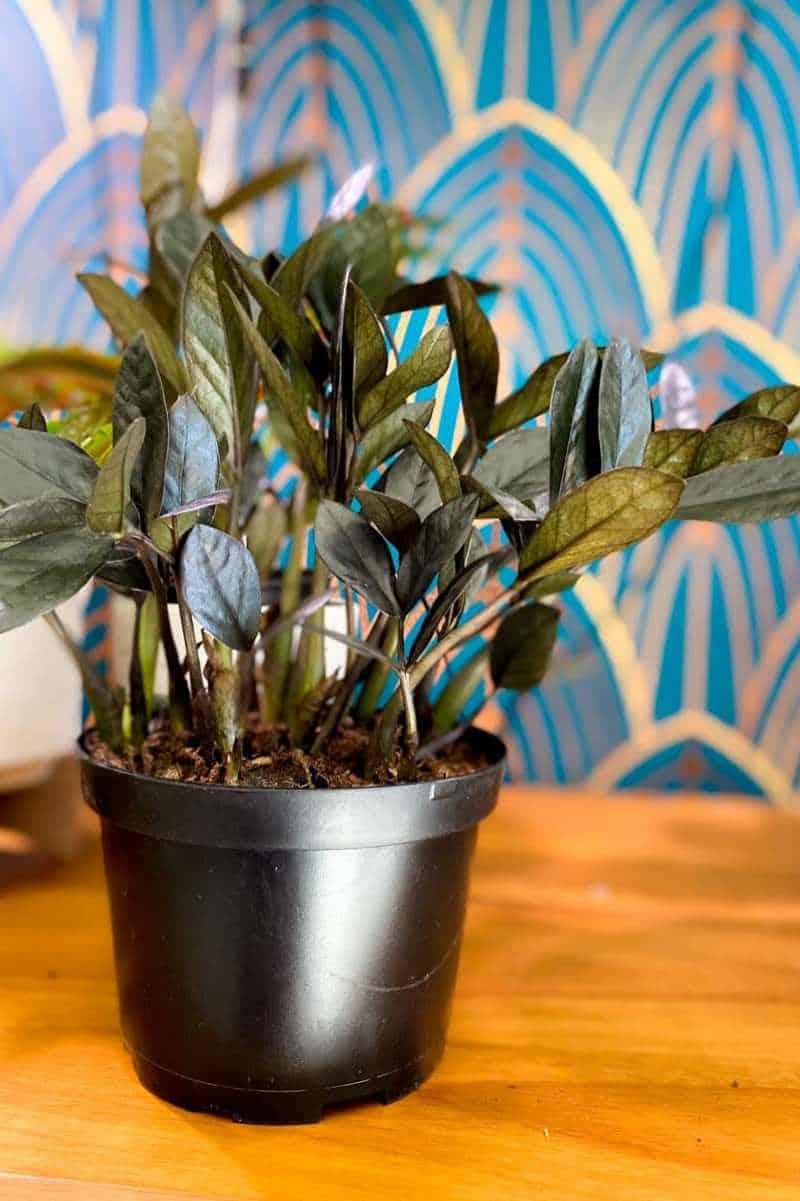
Where can I buy a Raven ZZ plant?
Though it is still considered a rare plant in many areas, ZZ Ravens have become easier to find in the past few months. Nowadays, you can find them in garden centers, nurseries, and sometimes even big box stores.
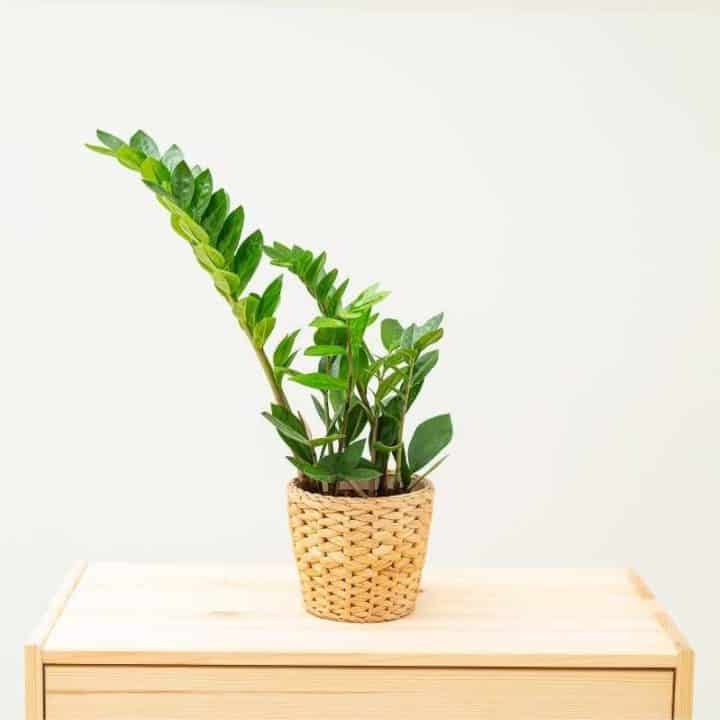
ZZ Plant Care
ZZ plants are a great choice for anyone looking for an easy-to-care for indoor plant. Read about their care, light, and watering needs here.
Materials
- ZZ Plant
- Well-draining potting soil
Tools
- Container with good drainage
- Wooden chopstick for aeration
Instructions
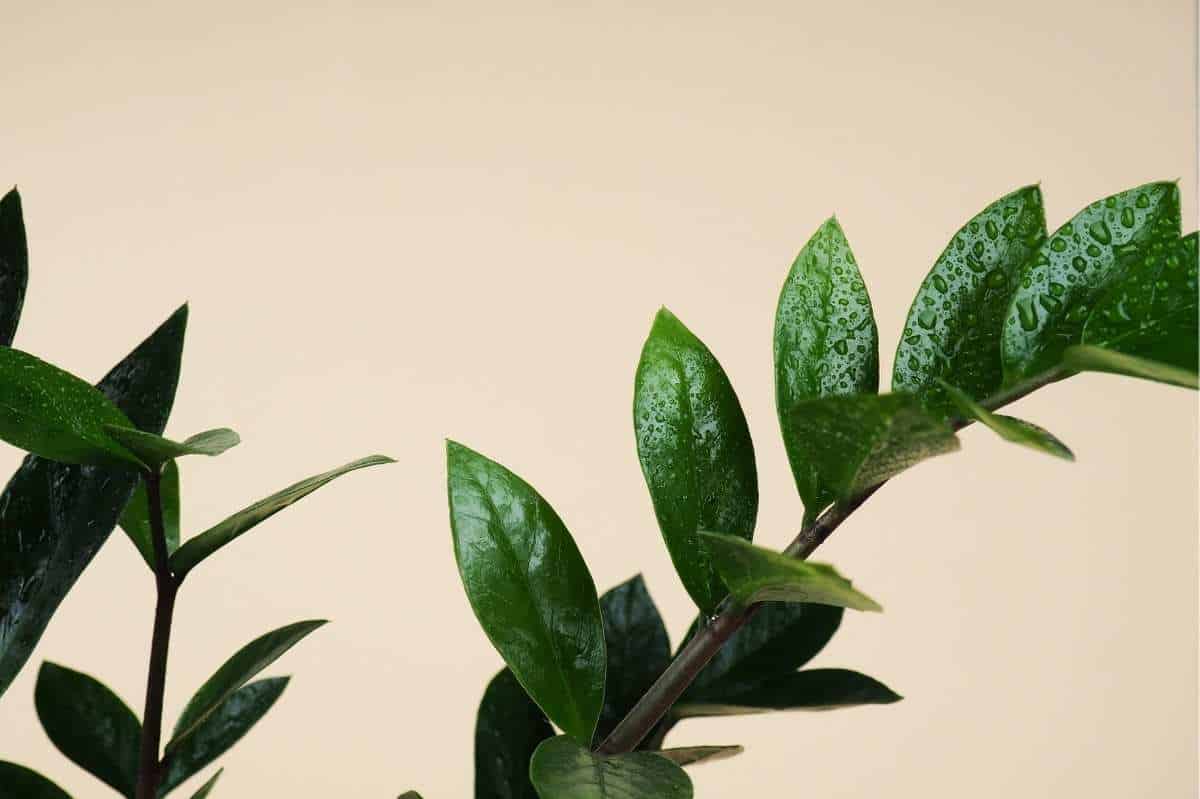
- Give the plant anywhere from low light all the way up to bright indirect light. The only kind of light that a zz plant won't thrive in is direct sunlight. Do note that you won't see as much new growth in low light.
- Do not overwater. The #1 culprit of zz plant death is overwatering. Make sure that the soil is completely dry before watering.
- Aerate the soil before watering. Use your wooden chopstick to gently poke holes in the surface of the soil to help air and water reach all of the roots and rhizomes before watering. Just be sure not to stab the rhizomes.
- Water thoroughly. When it is time to water your zz, give the plant a good drink, watering until you see water coming out of the drainage hole. Do not allow water to sit in the saucer.
- Wipe down the leaves. When you see a buildup of dust, use a damp cloth or sponge to gently wipe the leaves from stem to tip. This will help the plant be more effective with its photosynthesis.

